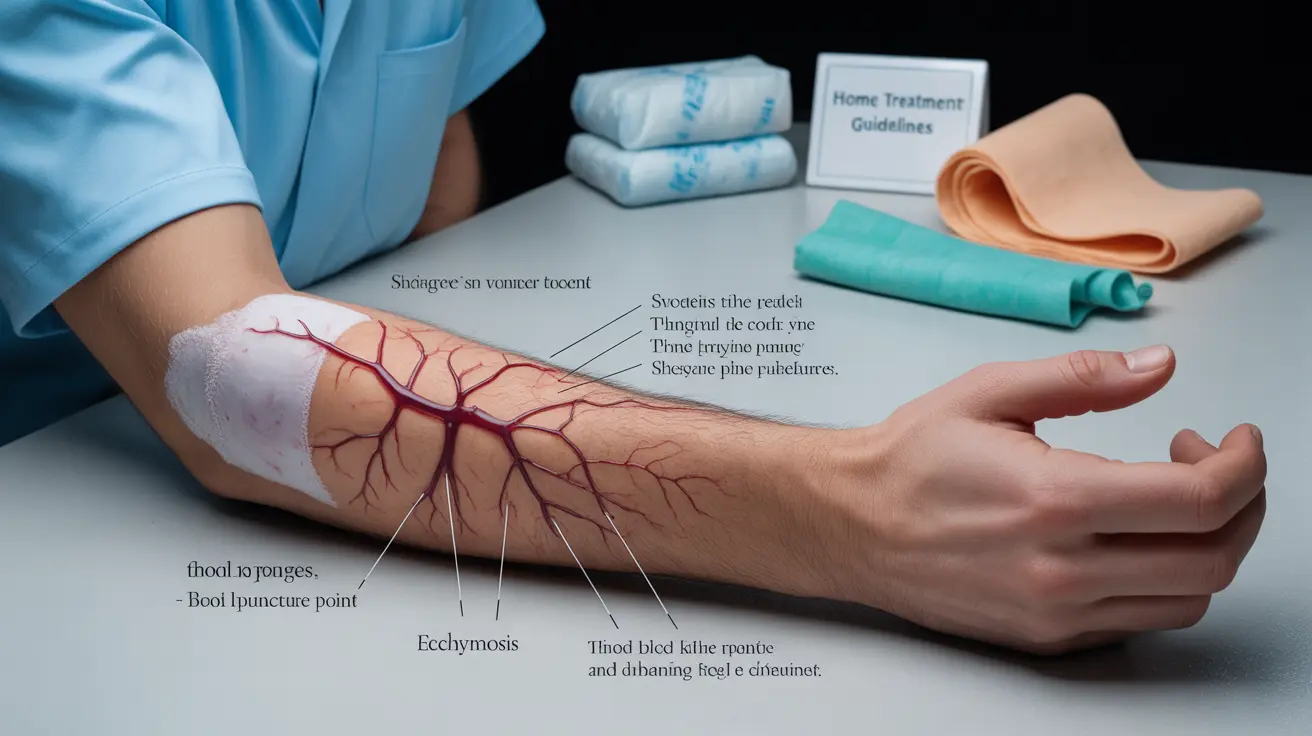Having blood drawn is a common medical procedure, but seeing a bruise develop afterward can be concerning for many people. While bruising after a blood draw is generally normal, understanding why it happens, how to treat it, and when to seek medical attention can help ease your mind and ensure proper healing.
This comprehensive guide will walk you through everything you need to know about managing and preventing bruises after blood draws, including treatment options and warning signs to watch for.
Why Bruising Occurs After Blood Draws
When a needle enters your vein during a blood draw, it creates a small injury to the blood vessel wall. Sometimes, a small amount of blood can leak into the surrounding tissues, causing the characteristic discoloration we recognize as a bruise. This process, known medically as ecchymosis, is typically harmless and part of the normal healing process.
Common Causes and Risk Factors
Several factors can increase your likelihood of developing a bruise after a blood draw:
- Taking blood thinners or anticoagulant medications
- Having thin or fragile veins
- Movement during the blood draw
- Multiple attempts to locate a vein
- Individual differences in blood vessel structure
- Certain medical conditions affecting blood clotting
Prevention Strategies
While some bruising may be unavoidable, you can take several steps to minimize your risk:
- Inform the phlebotomist about any blood-thinning medications
- Stay well-hydrated before the procedure
- Remain still during the blood draw
- Apply firm pressure to the site immediately after
- Keep the bandage on for the recommended time
- Avoid strenuous activity with that arm for several hours
Treatment and Recovery
If you develop a bruise after a blood draw, several home remedies can help speed up healing:
- Apply cold compresses for the first 24 hours
- Switch to warm compresses after 24 hours
- Keep the area elevated when possible
- Take over-the-counter pain relievers if needed
- Avoid massaging the area directly
Warning Signs to Watch For
While most bruising is harmless, certain symptoms warrant medical attention:
- Severe pain or swelling
- Bruise that continues to expand
- Numbness or tingling in the affected arm
- Signs of infection (redness, warmth, fever)
- Difficulty moving your arm
- Bruising that doesn't improve after two weeks
Frequently Asked Questions
Why do I get bruising after a blood draw, and does it mean something is wrong?
Bruising occurs when blood leaks into surrounding tissues during the needle insertion. This is usually normal and doesn't indicate a problem unless accompanied by severe pain or excessive swelling.
What can I do at home to treat or speed up healing of a bruise after a blood test?
Apply cold compresses for the first 24 hours, followed by warm compresses afterward. Keep the area elevated, and avoid strenuous activity with the affected arm. Over-the-counter pain relievers can help if needed.
How can I prevent bruising after a blood draw, and does medication or my health history increase the risk?
Blood-thinning medications can increase bruising risk. To prevent bruising, stay well-hydrated, inform your phlebotomist about medications, remain still during the draw, and apply firm pressure afterward.
When should I be concerned about bruising after a blood draw, and what signs mean I should see a doctor?
Seek medical attention if you experience severe pain, continuous swelling, numbness, signs of infection, or if the bruise continues to expand or hasn't improved after two weeks.
How long does bruising usually last after a blood test, and what's considered normal recovery?
Most bruises after blood draws typically resolve within 5-10 days. The color may change from purple to green to yellow as it heals, which is normal. Recovery taking up to two weeks can still be considered within normal limits.




